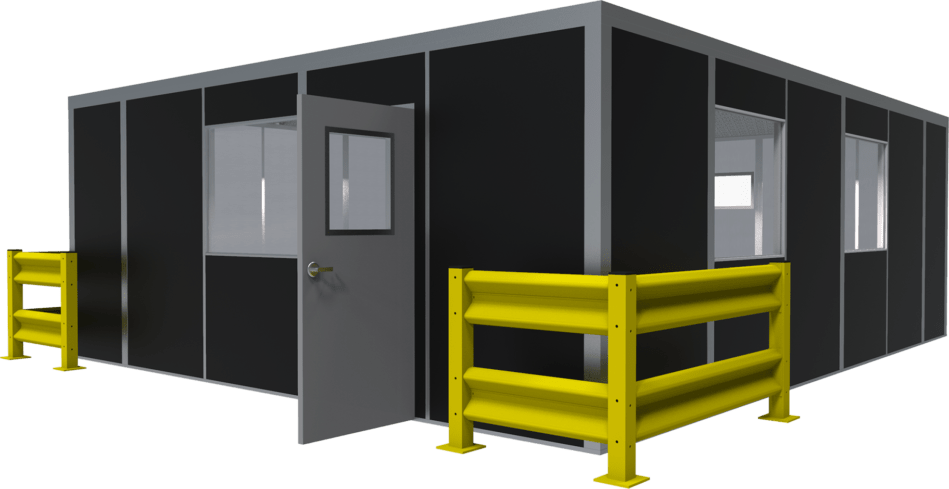Navigating the ISO Standards for Cleanrooms: A Comprehensive Guide
In the realm of modular building enclosures and cleanrooms, adherence to international standards is not just a regulatory formality but a cornerstone of operational excellence. Among these, the ISO (International Organization for Standardization) standards for cleanrooms stand out as the definitive benchmarks for design, operation, and monitoring. This blog post delves into the intricacies of these standards, shedding light on their significance and how they shape the cleanroom industry.
Understanding the ISO Cleanroom Standards
The ISO 14644 series is the cornerstone of cleanroom classification and standardization. It encompasses various aspects of cleanroom technology, including air cleanliness levels, testing methods, and design and operation protocols. The series is designed to provide a comprehensive framework for cleanroom management, ensuring that these controlled environments meet the rigorous demands of industries such as pharmaceuticals, biotechnology, and electronics manufacturing.
Key Components of the ISO 14644 Series
- ISO 14644-1: Classification of Air Cleanliness
- This standard is the linchpin of the series, delineating the air cleanliness classes in cleanrooms and clean zones. It categorizes cleanrooms from ISO 1 to ISO 9, based on the concentration of airborne particles. ISO 1 represents the cleanest environments, while ISO 9 corresponds to the least stringent conditions.
- ISO 14644-2: Monitoring to Provide Evidence of Cleanroom Performance
- It emphasizes the importance of a well-thought-out monitoring plan to ensure ongoing compliance with the designated cleanliness class. This involves regular testing and documentation, which are crucial for maintaining the integrity of the cleanroom environment.
- ISO 14644-3: Test Methods
- This part provides detailed methodologies for testing various parameters within a cleanroom, including airborne particle concentration, airflow, pressure differences, and temperature and humidity conditions. These tests are vital for verifying that a cleanroom meets the specified standards.
- ISO 14644-4: Design, Construction, and Start-up
- It outlines the requirements for the design and construction of cleanrooms, ensuring that the infrastructure is conducive to maintaining the desired cleanliness levels. This includes considerations for materials, systems, and equipment used in cleanrooms.
- ISO 14644-5: Operations
- This standard provides guidelines for the operational aspects of cleanrooms, covering practices like cleaning, gowning, and personnel behavior to minimize contamination risks.
- ISO 14644-7: Separative Devices
- It focuses on separative devices like clean air hoods, gloveboxes, isolators, and mini-environments, detailing their performance and testing requirements.
- ISO 14644-8: Classification of Airborne Molecular Contamination
- This part extends the scope of cleanroom standards to include molecular contamination, which is particularly relevant for industries sensitive to such pollutants.
- ISO 14644-9: Surface Particle Cleanliness
- It introduces the classification of surface cleanliness by particle concentration, addressing the need to control contamination not just in the air but also on surfaces within the cleanroom.
- ISO 14644-10: Assessment of Suitability for Use of Equipment by Airborne Particle Concentration
- This recent addition focuses on evaluating cleanroom equipment based on its contribution to the airborne particle concentration, ensuring that all components within the cleanroom are compliant with the cleanliness standards.
The Impact of ISO Standards on Cleanroom Design and Operation
The ISO 14644 series serves as a global language for cleanroom professionals, providing a uniform set of criteria for the design, operation, and assessment of cleanrooms. For experts in modular building enclosures and cleanrooms, these standards are invaluable tools that guide every phase of a cleanroom’s lifecycle, from conceptualization to commissioning and beyond.
Adherence to these standards ensures that cleanrooms not only meet the rigorous requirements of their respective industries but also operate with optimal efficiency and reliability. By following ISO guidelines, cleanroom operators can minimize contamination risks, enhance product quality, and reduce failure rates within their processes.
In conclusion, the ISO 14644 standards are more than just regulatory requirements; they are the blueprint for achieving excellence in cleanroom environments. For professionals dedicated to creating and maintaining state-of-the-art cleanrooms, a thorough understanding of these standards is essential. Whether designing a new facility or optimizing an existing one, the ISO standards provide the foundation for achieving the highest levels of cleanliness and operational efficiency.



